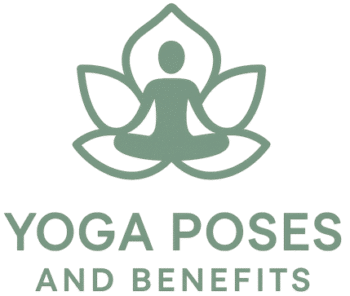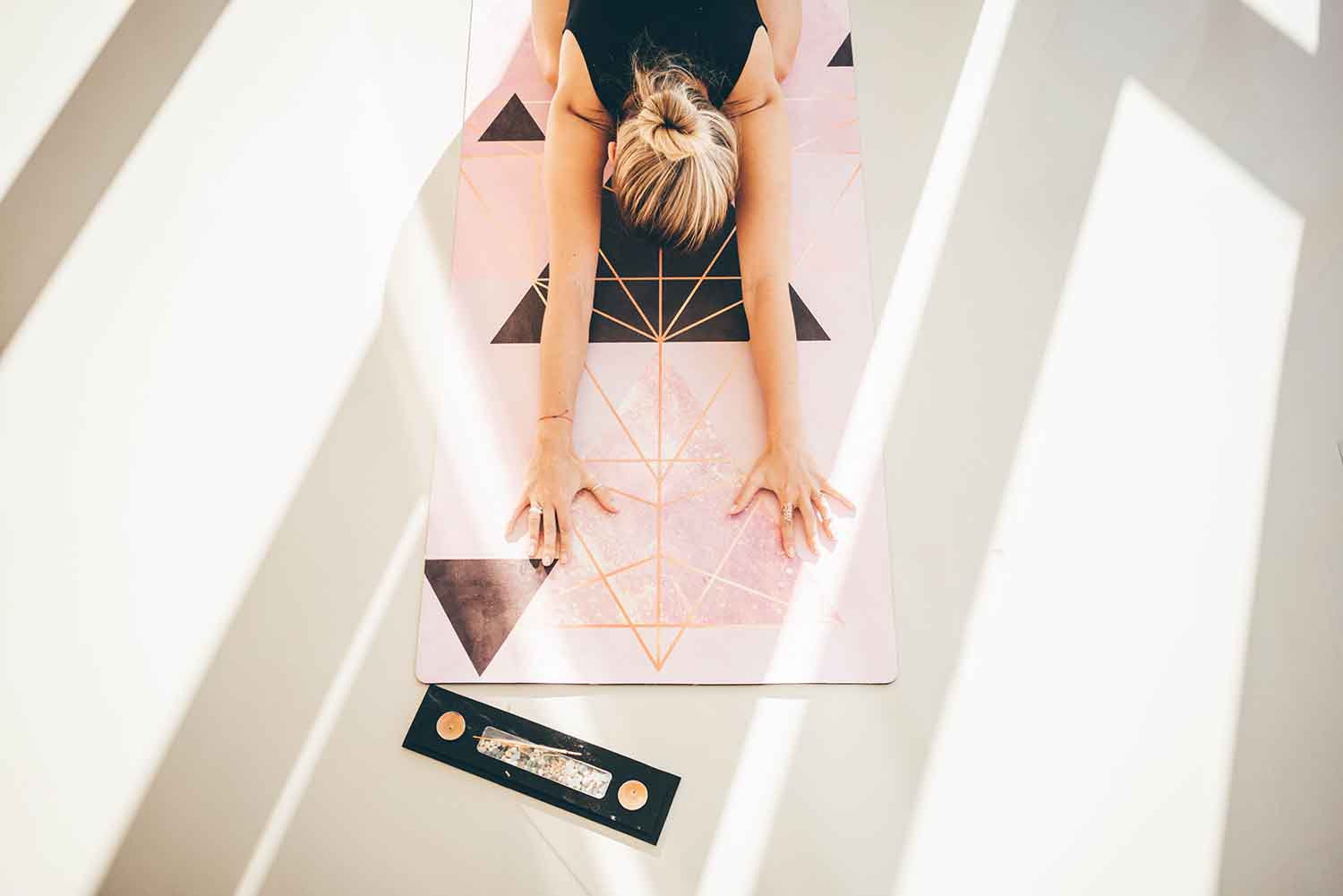Consider Your Yoga Practice Style
When choosing a yoga mat, it’s important to align the mat with your specific practice style. Different types of yoga require varying levels of support, stability, and cushioning, which is why selecting the right mat material can make a significant difference in your practice.
For fast-paced styles like Vinyasa or Ashtanga, a thinner yoga mat (around 3-4mm) offers better stability and a closer connection to the floor, essential for maintaining balance and fluid transitions between poses. These mats are also lightweight and perfect for those who attend frequent class sessions or practice while traveling.
In contrast, slower practices such as Yin or Restorative yoga benefit from thicker mats (5-8mm). A thicker mat provides extra cushioning, supporting your joints and offering more comfort during long-held seated or reclining postures.
For hot yoga or sweat-intensive classes, a rubber mat or cork mat works best due to their moisture-absorbing properties. These mats ensure superior traction, making them ideal for slippery, sweat-heavy sessions.
Ultimately, to choose a yoga mat, consider the specific needs of your practice. Whether it’s stability for fast movements, cushioning for deep stretches, or grip for sweaty sessions, finding the right mat ensures a safe and enjoyable experience.
Frequency of Use
How often you practice yoga is an important factor when selecting a yoga mat. If you practice daily or engage in high-frequency sessions, a durable mat made from materials like PVC or natural rubber is essential for long-lasting performance. These mats are designed to withstand wear and tear, making them an excellent choice for regular practice.
Daily practitioners benefit from mats with strong traction and cushioning, especially for more intense, active yoga practices. Over time, less durable mats may degrade, leading to reduced comfort and support. Investing in a high-quality mat ensures it retains its supportive properties over time.
On the other hand, occasional yogis who practice once or twice a week might prioritize portability and comfort over durability. Lightweight and foldable mats, particularly those made from TPE, are ideal for those who travel or attend studio classes sporadically. Although these mats may not offer the same long-term durability, they are easy to carry and store.
If you balance regular practice with occasional travel, having multiple mats could be beneficial. A thick, supportive mat for home use and a thinner, portable mat for travel offers flexibility for any situation.
Common Mat Materials and Their Benefits
The mat material you choose plays a key role in the performance and comfort of your practice. Different materials offer unique advantages depending on your needs and preferences.
PVC mats are known for their durability and excellent cushioning, making them ideal for long-term use. However, PVC is less eco-friendly, which may be a concern for environmentally conscious practitioners. Rubber mats, on the other hand, are eco-friendly and provide a superior non-slip surface, perfect for fast-paced or dynamic yoga styles like Vinyasa. However, they may initially have a slight odor.
Cork mats are also an eco-friendly option, offering excellent grip and moisture absorption, which improves as they get wet. They’re ideal for hot yoga or practices where sweat is a factor. Cork’s antimicrobial properties also reduce the need for frequent cleaning, making it a low-maintenance option.
For yogis prioritizing portability, TPE mats are lightweight and easy to transport, though they may not be as durable as rubber mats or PVC options.
Choosing a Yoga Mat Thickness
When deciding to pick a mat, thickness plays a major role in both comfort and stability. Thicker mats provide more cushioning, while thinner mats offer better ground connection, which is vital for balancing poses.
- Thin mats (2-4mm) are ideal for standing and balancing postures, providing stability and control.
- Thicker mats (5-8mm) offer cushioning for seated and floor-based poses, providing joint support.
- Consider the type of yoga and your practice environment when deciding on thickness.
Joint Support and Comfor
For those with sensitive joints or injuries, choosing a yoga mat with adequate cushioning is critical. The right mat can protect your knees, wrists, and hips from strain, especially during longer practice sessions.
- Thick mats (6-8mm) provide extra protection by reducing pressure on joints.
- Soft materials such as TPE or natural rubber offer better shock absorption for a more comfortable experience.
- Thicker mats are particularly helpful for slower practices like Yin yoga or meditation.
How to Choose a Yoga Mat with Good Grip
Having a yoga mat with excellent grip is essential for maintaining stability throughout your practice. A good grip ensures that you can move confidently between poses without slipping, especially in more dynamic practices.
- Rubber mats or mats with textured surfaces, like those made from polyurethane, offer exceptional grip.
- Mats designed to improve grip when wet are great for hot yoga or intense sessions where sweat is a factor.
- Consider mats with friction-enhancing textures or those made from moisture-absorbing materials like cork.
Non-Slip Features
Non-slip features are critical for maintaining safety during sweaty or fast-paced yoga practices. When choosing a yoga mat, it’s important to find one that provides consistent traction.
- Mats made from natural rubber or cork offer excellent non-slip properties.
- Some mats include built-in silicone grips or textured surfaces to ensure stability during your practice.
- Ensure your mat remains stable even when wet for added safety, particularly in more intense classes.
Yoga Mat Size and Portability
For taller practitioners or those needing more space during their practice, the size of the yoga mat is a key factor. While standard mats work for most people, taller individuals may need an extra-long mat to accommodate their full range of motion.
- Standard mats typically measure around 24″ x 68″.
- Extra-long mats, which can extend up to 84″, provide additional space for taller practitioners.
- If portability is important, look for lightweight, foldable mats that are easy to carry.
How to Choose a Yoga Mat for On-the-Go Practice
If you often travel or attend yoga classes outside your home, selecting a lightweight and portable mat is essential. Convenience is key when you’re on the go, but it’s also important to find a mat that offers enough support.
- Opt for thinner, foldable mats that are easy to transport and store.
- Look for mats with built-in carrying straps or bags for additional portability.
- Mats made from lightweight materials like TPE or thin rubber are ideal for travel.
Yoga Accessories to Enhance Your Practice
In addition to your mat, certain yoga accessories can help elevate your practice by providing extra support and improving alignment. Popular accessories include:
- Yoga Blocks: Useful for enhancing balance and flexibility, especially in poses where reaching the floor is difficult.
- Yoga Straps: These help improve flexibility and allow for deeper stretches, such as in Seated Forward Bend.
- Yoga Towels: Designed to absorb sweat and prevent slipping, these towels are essential for hot yoga or intense sessions.
- Yoga Bolsters: Ideal for restorative practices, bolsters provide extra cushioning and support for deep relaxation poses like Savasana.
- Meditation Cushions: These cushions help keep your spine aligned and support your hips during seated meditation sessions.
Extras Like Built-in Alignment Guides
Alignment guides printed on yoga mats can help ensure proper posture and positioning during your practice. These guides are especially useful for beginners, allowing you to place your hands and feet correctly in poses like Warrior II or Downward Dog. By providing visual references, alignment guides support your body’s symmetry and reduce strain on joints.
Whether you practice at home or in a studio without the guidance of an instructor, alignment guides offer additional help to improve form and prevent injury.
| Yoga Mat | Features | Website Link |
|---|---|---|
| Liforme Yoga Mat | Made from eco-friendly materials, the Liforme mat features a unique “AlignForMe” system with clear alignment markers for various poses. | Liforme Yoga Mat |
| Gaiam Yoga Mat with Alignment Lines | This mat features printed alignment lines to help with posture during poses. It’s lightweight and suitable for various yoga styles. | Gaiam Yoga Mat with Alignment Lines |
| Lululemon Reversible Mat with Alignment | This mat includes subtle alignment markers and offers excellent cushioning and grip, perfect for hot yoga. | Lululemon Reversible Mat |
| Heathyoga Alignment Mat | This eco-friendly TPE mat has alignment lines to ensure correct hand and foot positioning, making it ideal for beginners. | Heathyoga Alignment Mat |
| Manduka Pro Yoga Mat with Guide | Manduka offers a sturdy, high-density mat with subtle alignment markers, designed for long-term use. | Manduka Pro Yoga Mat |
Shop Smart – Compare and Research
When shopping for a yoga mat, take the time to read product reviews, compare features, and consider pricing options to find the best mat for your needs. Mats are made from various materials and have different features, so it’s important to select the one that matches your practice style. Whether you prioritize durability, grip, or eco-friendliness, investing time in research ensures you get the right mat.
- Identify the key features you need, such as thickness, grip, and eco-friendliness.
- Read product reviews and testimonials to get an idea of a mat’s long-term performance.
- Compare mats by price and features to find the best value for your budget.
Where to Shop for Yoga Mats
Shopping online provides the widest selection of yoga mats, with plenty of product reviews to guide your decision. However, visiting a local yoga studio or sporting goods store allows you to feel the mats in person, test their grip, and assess their comfort level.
- Shop online for the best selection, with reviews to help guide your choice.
- Visit local studios or stores to test the feel, texture, and grip of mats.
- Compare prices across different platforms to ensure you get the best deal.

